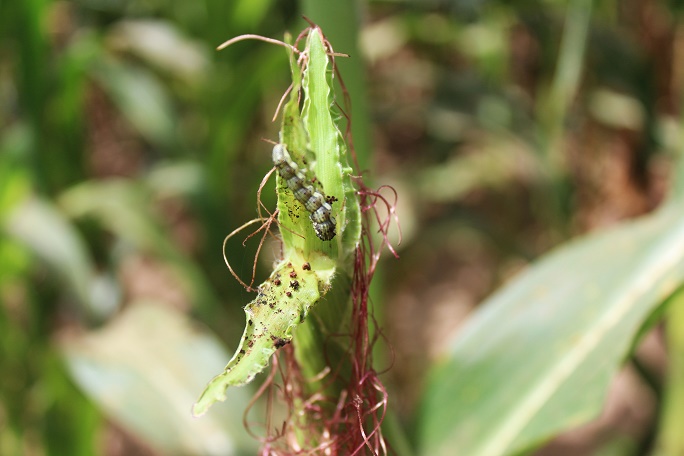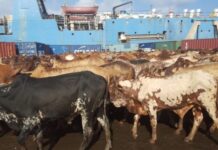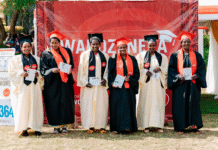By Nonkululeko Britton-Masekela, an organic farmer and thought leader in agriculture
The fall armyworm infestation in Africa is bankrupting farmers who cannot afford expensive insecticides to protect their crops. Struggling farmers are now resorting to selling off their land to the highest bidder. Farmers say the pest, which was first detected in central and western Africa in 2016, has become a thorn in their sides that they just can’t get rid of. They have only a handful of successful harvests and sell the produce for very little, which does not even cover the costs of growing the plant. The pest has compounded their problem ten-fold.
Farmer Joseph Nampajji from Buwaya, Uganda, said he was forced to start bartering his vegetation to pay for the tuition of his eight children.
“It’s really hard being a farmer in these times. Many people I know are running away from farming. They are giving the land to businessmen, this is increasing everywhere,” he said.
“Farmers are not making enough money because they are selling their harvests for a low cost, and it costs a lot more to grow the crops. With me, I use harvests to pay in kind, for tuition payment.”
The 44-year-old, although a teacher by profession, will not let his farm go. He loved farming since a kid and despite the hardship with the pest on his 2 acre farm, he continues to grow maize, beans, and sweet potato.
“Last season the worm affected me a lot because we were not prepared for it. Right now, it affects a few stocks only. If you identify the worm early-enough you can prevent it from spreading. You have to keep checking the plants to see how they are doing and if they are infected,” he said.
When he finds crops that are affected, he uproots them and uses them as mulch. Those that can be saved are sprayed with insecticide. But not all plants get the insecticide.
“I apply according to my means,” said Nampajji, who along with his wife are the breadwinners of the family.
“Not all get insecticide.”
The armyworm flies nearly 1,000 miles in just 30 hours and can easily migrate to neighbouring countries. The female moth can lay up to a total of 1,000 eggs in her lifetime, and in its larvae stage, can cause significant damage to crops if not managed appropriately. It has a taste for maize but also feeds on more than 80 species of plants including rice, sorghum, millet, sugarcane, vegetable crops and cotton. In sub-Saharan Africa, over 200 million people depend on maize for food security as it is a staple cereal crop grown by farmers.
So far, the invasion of the fall armyworm has resulted in some containment measures being undertaken, but none are long-term or sustainable. Innovation and technology may be crucial to finding small solutions that can help mitigate the risk of decreasing food security in Africa. The value of small innovations means that farmers can start tackling the issue before it’s too late.
In this regard, Nesta, on behalf of Feed the Future, Land O’ Lakes International Development (LOL) and the Foundation for Food and Agriculture Research (FFAR) have launched a competition targeting innovators from around the globe. It focuses on digital solutions and approaches that provide timely, context-specific information that will enable smallholder farmers and those who support them to identify, treat, and track incidence of the fall armyworm in Africa. The US Agency for International Development (USAID), together LOL and FFAR have contributed $400,000 in prize awards, and the winners will have a chance to develop their prototypes.
Feed the Future hopes to increase agricultural activity, boost harvests and incomes for rural smallholder farmers, generate opportunities for economic growth and trade in developing countries.
USAID’s Digital Inclusion team believes that with advances in digital communications, social networks, satellite imagery, electronic data collection and sharing, sensing technologies, crowdsourcing, and the global movement to share open data, more information than ever can be efficiently communicated and made relevant for farmers. While digital tools are not the only solutions to fall armyworm, technological solutions can help serve as a force multiplier to an already strained advisory service.
If you have an idea for a digital solution to the fall armyworm problem, you can enter the Fall Armyworm Tech Prize competition. The entry period is from 28 March to 14 May. Go to fallarmywormtech.challenges.org for more details to learn more about fall armyworm and how to apply for the competition.
The Fall Armyworm Tech Prize is run by Nesta’s Challenge Prize Centre, which uses prizes as a tool to stimulate innovative solutions to tackle some of the world’s biggest challenges.








